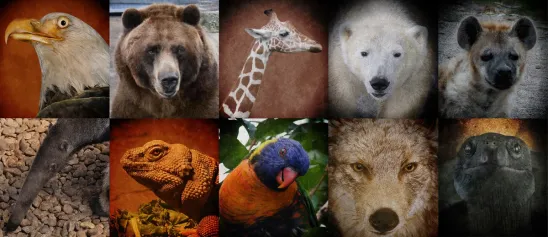The lesser prairie-chicken—a grouse whose range covers the western portions of Kansas and Oklahoma; the Texas Panhandle, including the Llano Estacado; eastern New Mexico; and southeastern Colorado—is subject to yet another proposed listing under the Endangered Species Act (“ESA”). On June 1, 2021, the US Fish & Wildlife Service (“FWS” or the “Service”) proposed to re-list two distinct population segments (“DPS”) of the species. 86 Fed. Reg. 29,432 (June 1, 2021). The proposal is subject to a 60‑day public comment period, through August 2. FWS is expected to issue a final decision within a year.
FWS’s proposal marks the latest installment in a regulatory history for the lesser prairie-chicken now entering its third decade. A petition to list the lesser prairie-chicken as “threatened” under the ESA was submitted to FWS in 1995. As a result, FWS classified the lesser prairie-chicken as a candidate for listing in 1998, but other higher priority species took precedence. In September 2010, environmental groups filed suit, seeking to expedite review of the species. That lawsuit settled, and, in December 2012, FWS published a proposed rule to list the lesser prairie-chicken as threatened, which was issued as a final rule on April 10, 2014. 79 Fed. Reg. 19,973 (Apr. 10, 2014). Under the ESA regulations then in place, FWS automatically extended the same take prohibition for species listed as threatened as to those listed as endangered except as otherwise specified in an ESA Section 4(d) “special rule.” Accordingly, when it listed the lesser prairie-chicken as threatened, FWS issued a special rule under ESA Section 4(d) that allowed for certain covered oil and gas, agricultural, and wind activities to proceed, subject to conservation measures designed to protect the species and its habitat.
For example, the 2014 Section 4(d) rule incorporated conservation plans and restoration measures to protect lesser prairie-chicken habitats. Among those plans was the Lesser Prairie Chicken Range-Wide Conservation Plan, developed in conjunction with five state wildlife agencies and numerous stakeholders across the lesser prairie-chicken’s range. The Range-Wide Conservation Plan identified population goals, metrics for monitoring, and a system for mitigating impacts. Other conservation measures in place to protect the lesser prairie-chicken included US Department of Agriculture’s (USDA) Farm Services Agency’s Conservation Reserve Program, which provided agricultural landowners financial incentives for voluntarily converting productive land into vegetative cover; state-level conservation plans, including the State Acres for Wildlife Enhancement program; and multiple Candidate Conservations Agreements (CCA) and Candidate Conservation Agreements with Assurances (CCAA).
As a result of these extensive state conservation efforts, groups challenged the Service’s determination that the lesser prairie-chicken required listing under the ESA. A Texas District Court agreed, finding that FWS did not adequately consider the effectiveness of the various conservation efforts, and, consequently, vacated the listing rule in 2015. FWS removed the lesser prairie-chicken from the list of endangered and threatened species in July 2016. Two months later, environmental groups petitioned FWS to once again list the lesser prairie-chicken under the ESA, arguing that it still required protection. FWS completed an initial status review, as required under the Act, and determined that the environmental groups’ petition presented sufficient information to move forward with a 12-month review. Several years later, after no action by FWS, in June 2019, environmental groups filed suit, challenging FWS’s delay. That lawsuit settled, and, pursuant to the settlement agreement, FWS agreed to reach a decision on its 12-month finding whether listing the lesser prairie-chicken was warranted by May 26, 2021.
In this most recent proposal, FWS bifurcates the lesser-prairie-chicken population into two DPSs. A DPS is a portion of a species’ or subspecies’ population or range that is described geographically rather than biologically. DPSs are intended to allow FWS to tailor listing decisions based on differing circumstances between population portions. Here, FWS proposes to list the lesser prairie-chicken’s distinct northern population—southwestern to southcentral Kansas, western Oklahoma, northeast Texas Panhandle, and southeast Colorado—as threatened under the ESA, with a Section 4(d) rule. Like the 2014 Section 4(d) rule, this rule would allow certain activities to proceed (and not constitute “take” of the species), so long as the activities meet the requirements of the 4(d) rule, including protections and conservation measures for the lesser prairie-chicken and its habitat. Citing weaker population resiliency relative to the distinct northern population, FWS proposes to list the distinct southern population of the lesser prairie-chicken—southwest Texas Panhandle and eastern New Mexico—as endangered under the ESA. Because of the size and location of the lesser prairie-chicken’s range, a large swatch of which overlaps with the Permian Basin, if the lesser prairie-chicken is relisted under the ESA, there are likely to be significant implications for activities in those areas, including agriculture, oil and gas development, renewable energy, and other utility projects.
FWS will accept comments on the proposal through August 2. FWS will also hold two information sessions, each followed by public hearings, on July 8 and 14. Once the comment period closes, the Service will make a final listing decision within a year.





 />i
/>i

